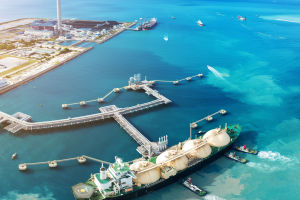Driving a yacht is an exciting activity, but it also comes with certain safety risks.
Whether in open waters or more enclosed areas, the operator must remain vigilant at all times to ensure the safety of themselves and their passengers.
First and foremost, the basic safety equipment must be fully equipped and in good condition. For example, life jackets are the most basic safety feature, and every passenger should wear one that fits their size. Additionally, it is essential to have sufficient emergency signaling devices, fire extinguishers, and radio equipment, as they can provide timely assistance in case of an emergency.
Another important safety issue is the weather conditions. Before setting out, it is crucial to understand and predict the weather for the day. Strong winds, storms, or sudden thunderstorms can make sailing dangerous, especially when visibility is low.
To avoid such risks, it is advisable for the operator to closely monitor the local weather forecasts and postpone sailing in unfavorable conditions. Additionally, it is important to understand the performance and limitations of the yacht being operated.
Different types of yachts perform differently in various water bodies and weather conditions, and some yachts may handle poorly in rough seas or strong winds, so operators should choose an appropriate route based on the specific conditions.
Another common safety hazard is obstacles in the water. During navigation, especially in narrow waterways or near shorelines, hidden rocks, buoys, or other small vessels can pose a threat to the yacht.
To prevent collisions, the operator should constantly monitor the water's surface and use appropriate navigation equipment to identify potential obstacles. If the area of operation is complex, using sonar systems to scan the underwater environment can be an effective preventive measure.
Moreover, the operator's condition directly affects the safety of the voyage. Alcohol and drug use while operating a yacht significantly increases the risk of accidents. Just like land driving, driving a yacht under the influence is a dangerous behavior.
Fatigue is another important factor that leads to accidents.
During the voyage, particular attention should be paid to the distance and interactions with other vessels. Although yachts typically have greater freedom of movement, the risk of collision with other vessels remains, especially in busy traffic lanes.
Long hours of sailing can cause the operator to become fatigued, slowing their reactions, so ensuring sufficient rest and rotating operators appropriately is an effective way to ensure safety. Overconfidence is also a potential danger. Ignoring potential risks or overestimating one's sailing experience may lead to an inability to respond to unforeseen emergencies.
Sometimes, despite all preventive measures, unexpected mechanical failures may cause danger. Therefore, regular inspection and maintenance of the yacht is crucial to ensure that critical components such as the engine, propeller, and navigation equipment are functioning properly.
Before long voyages, checking fuel levels and battery power is important to avoid being stranded due to power system failures. If a failure occurs during the voyage, it is essential to use emergency communication devices to stay in contact with the shore and seek assistance.
While driving a yacht is full of enjoyment, it is important to stay aware of various safety hazards. Through proper preparation, adequate training, a clear mind, and attention to weather and sea conditions, operators can effectively reduce the likelihood of accidents.
Most importantly, always prioritize safety so that while enjoying the voyage, the safety of oneself and others is ensured!


